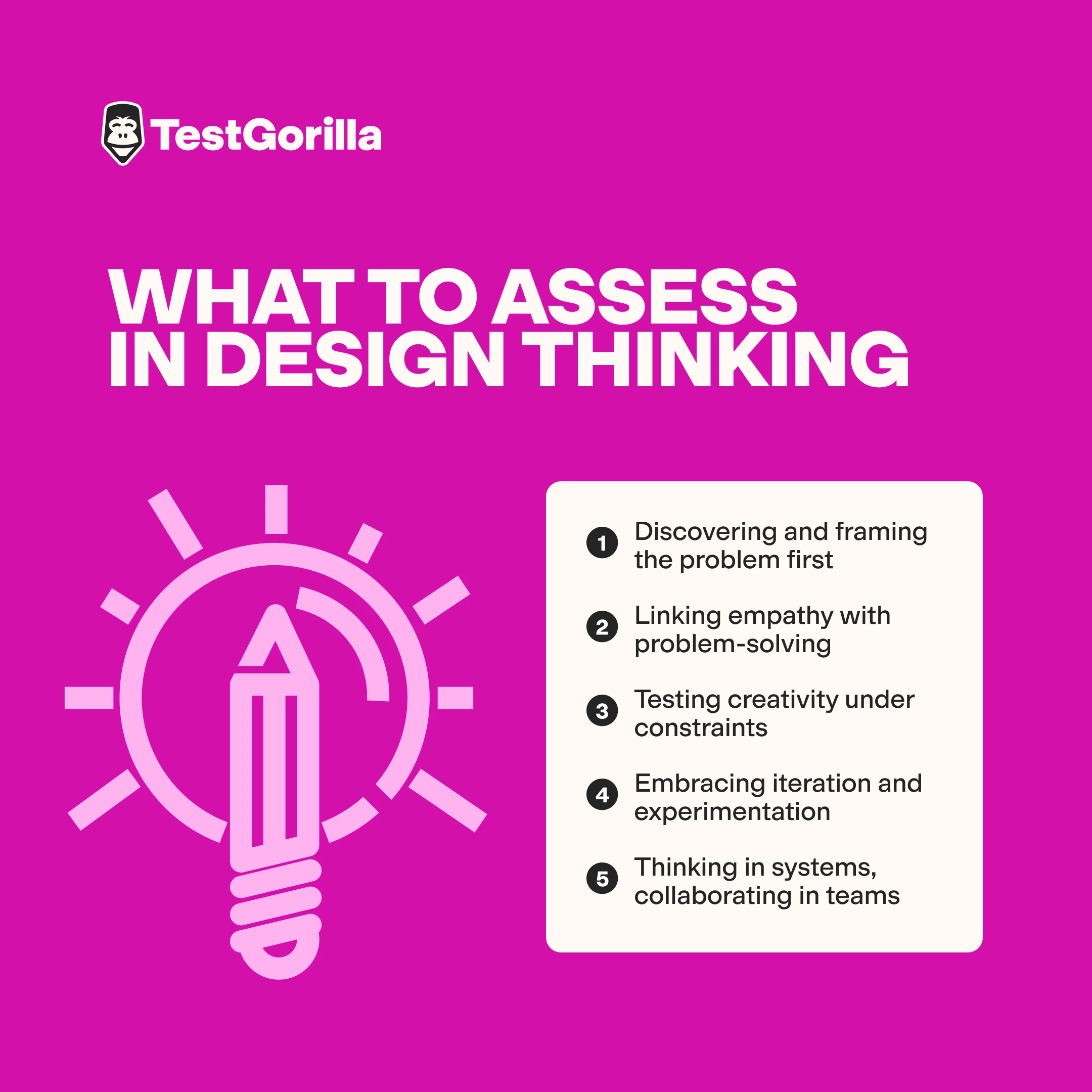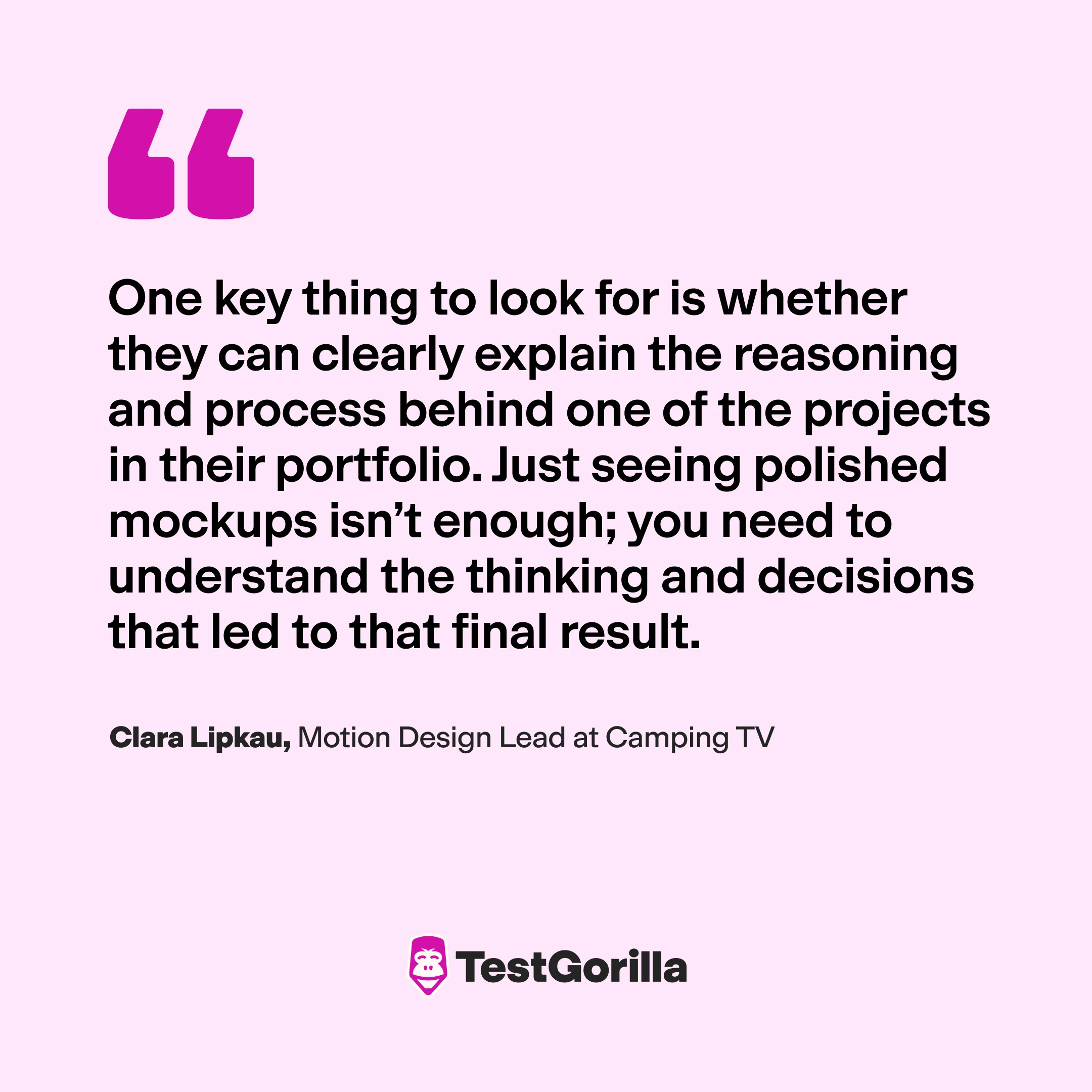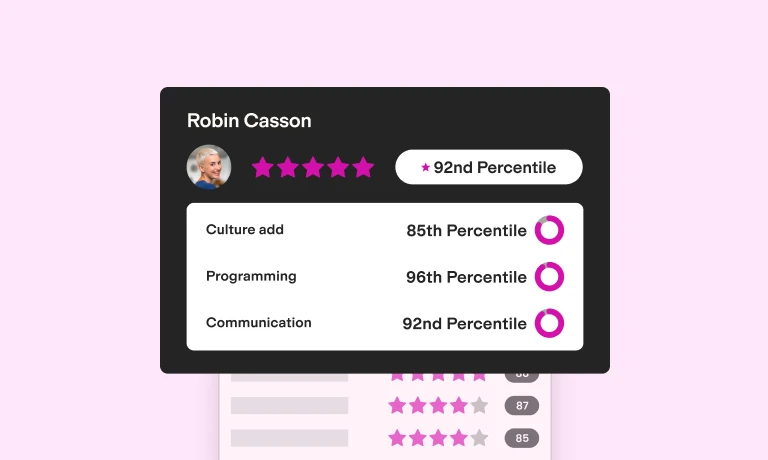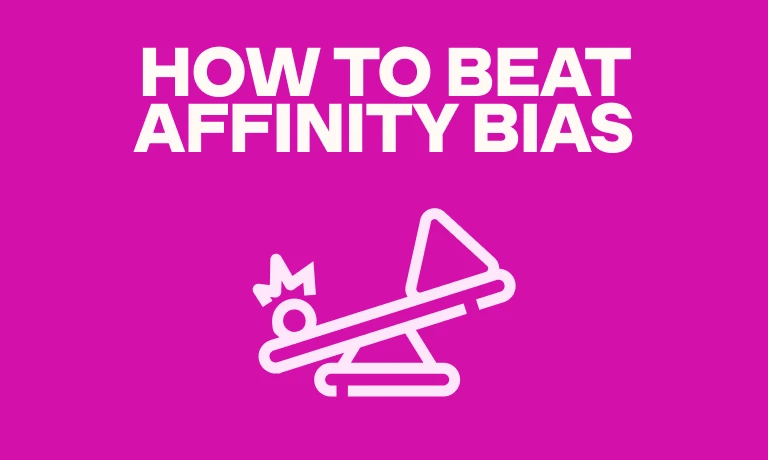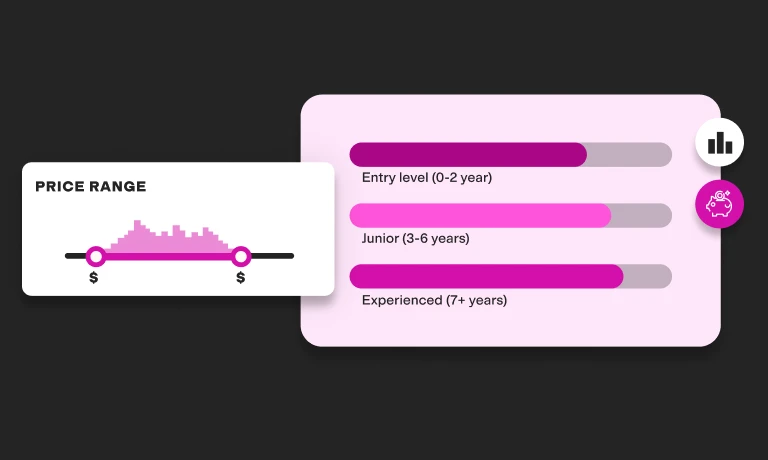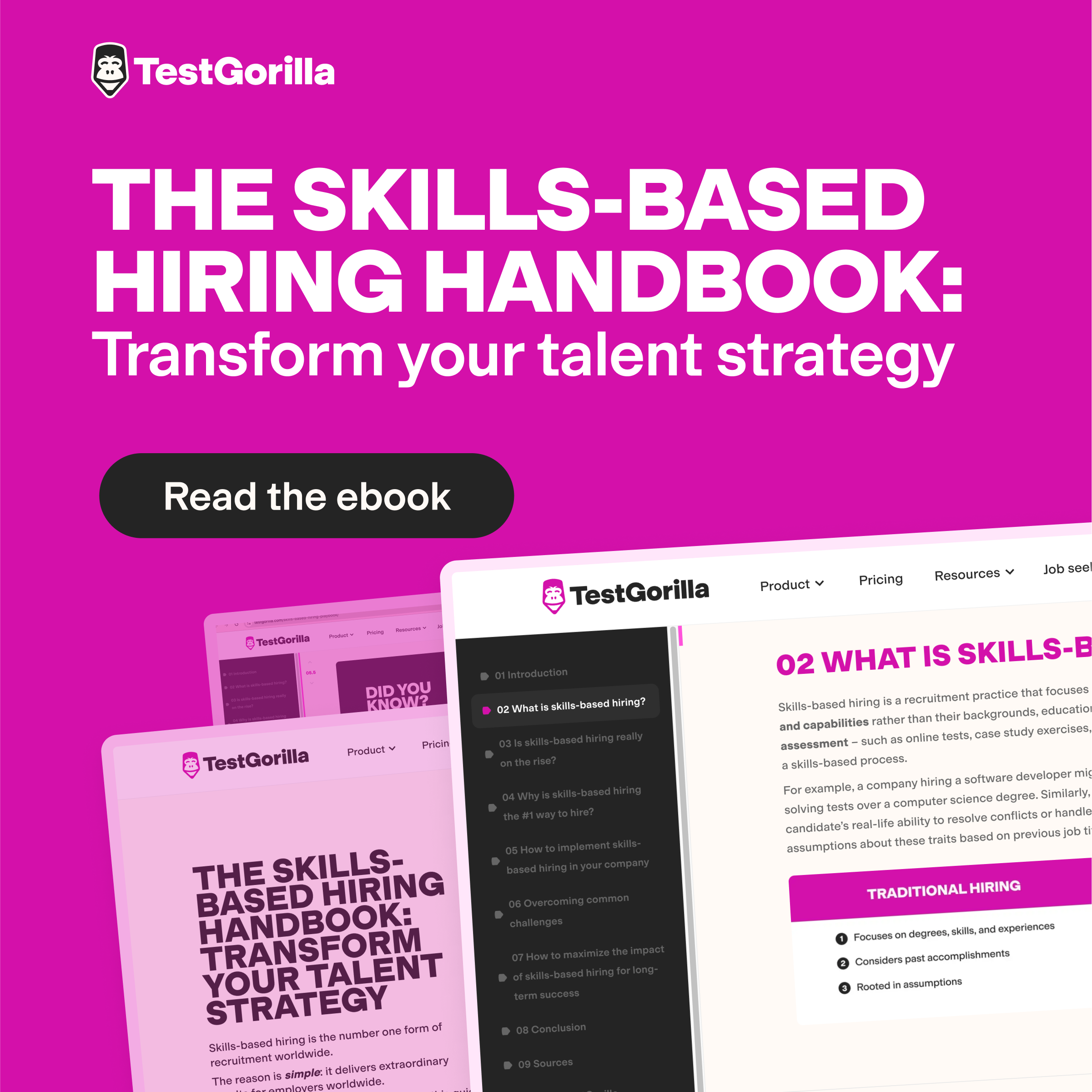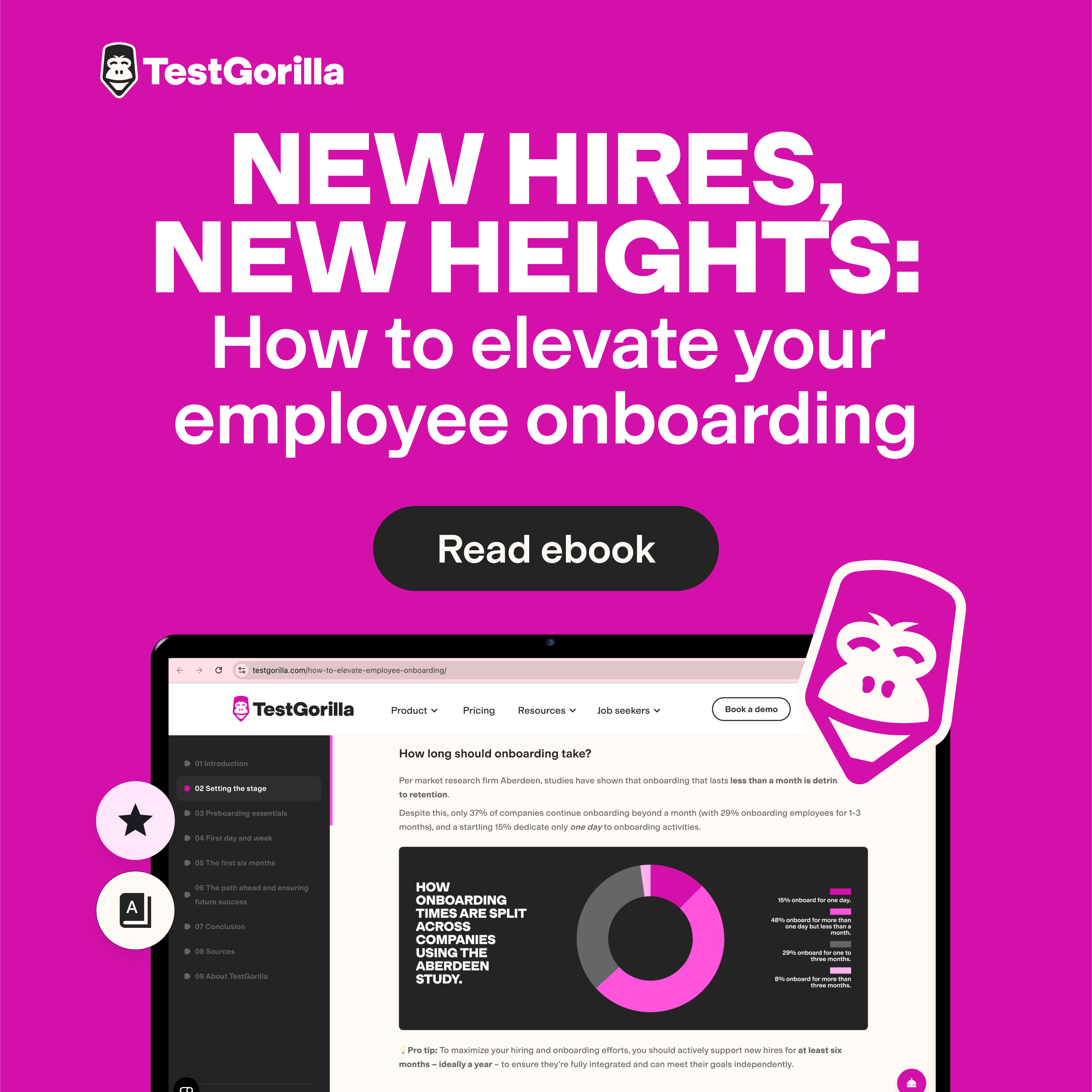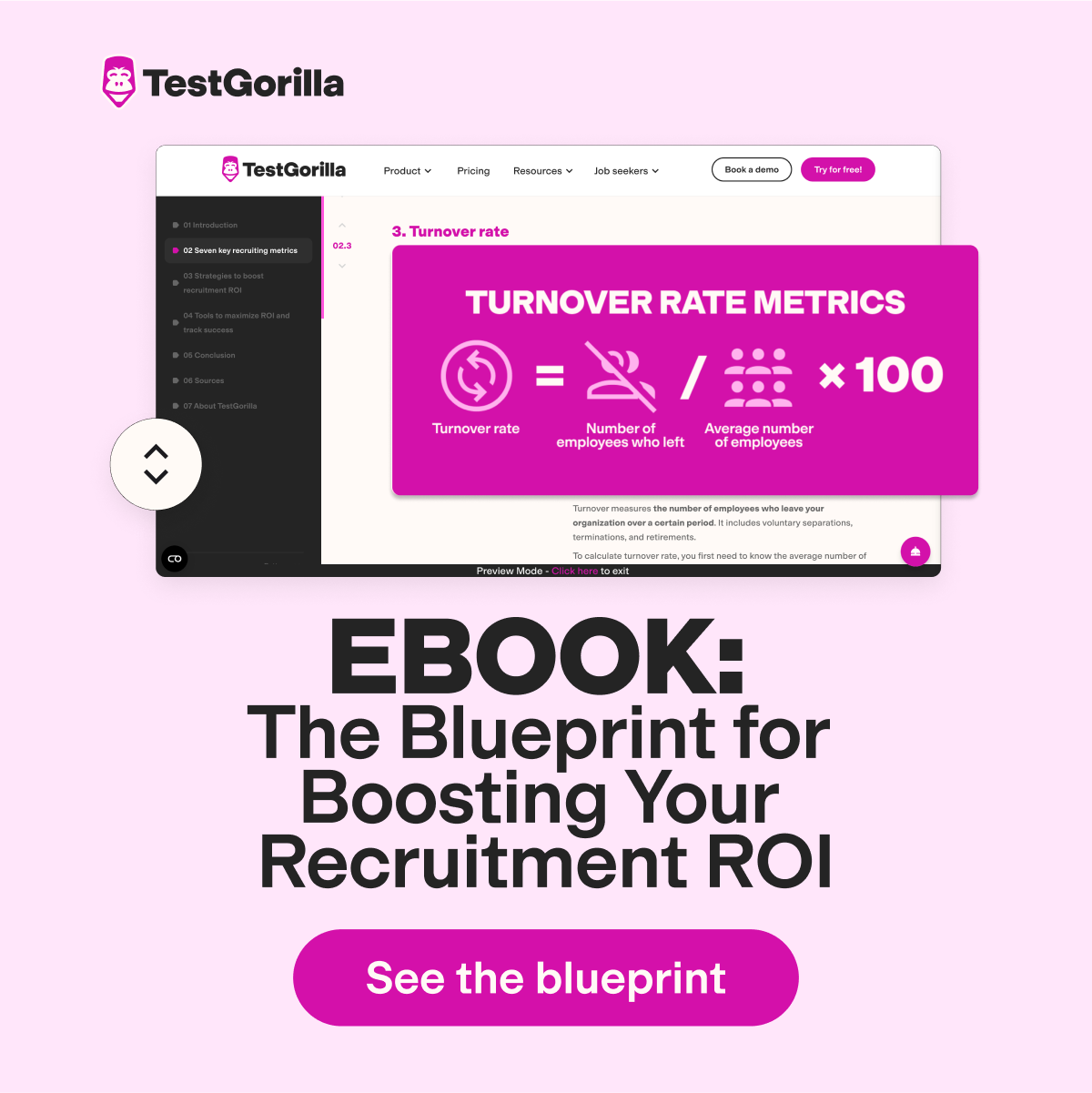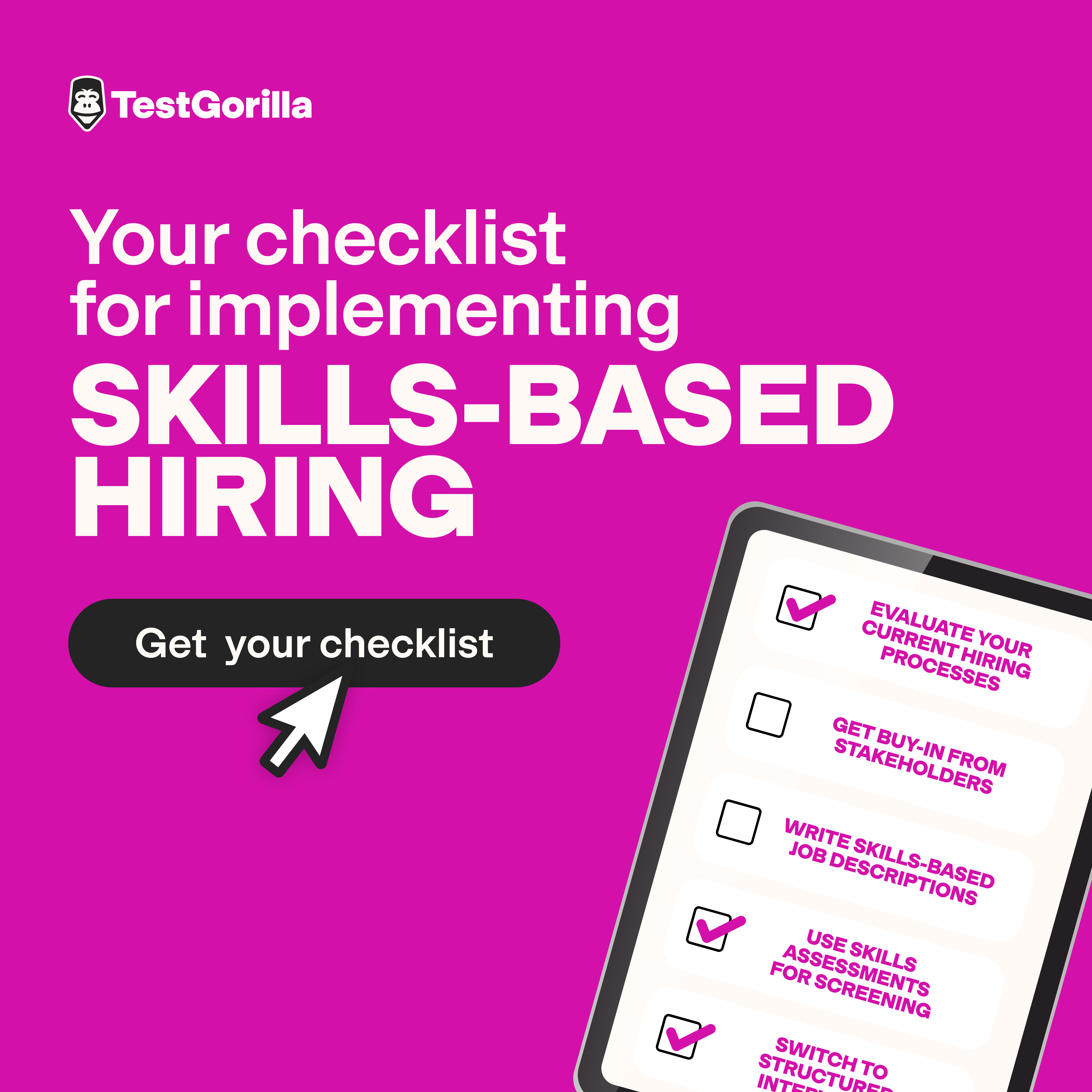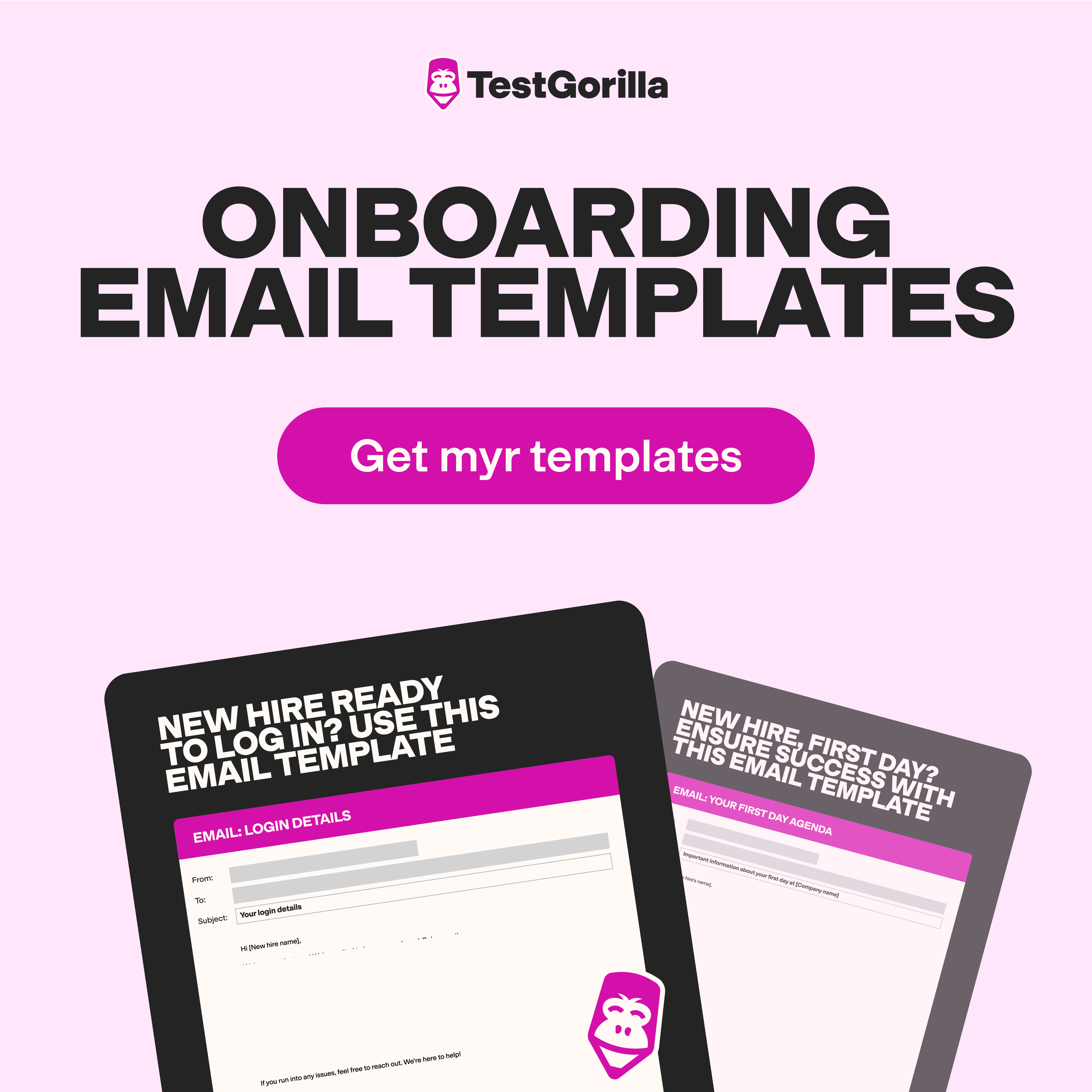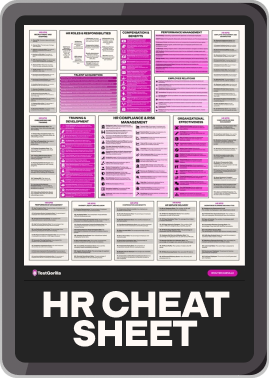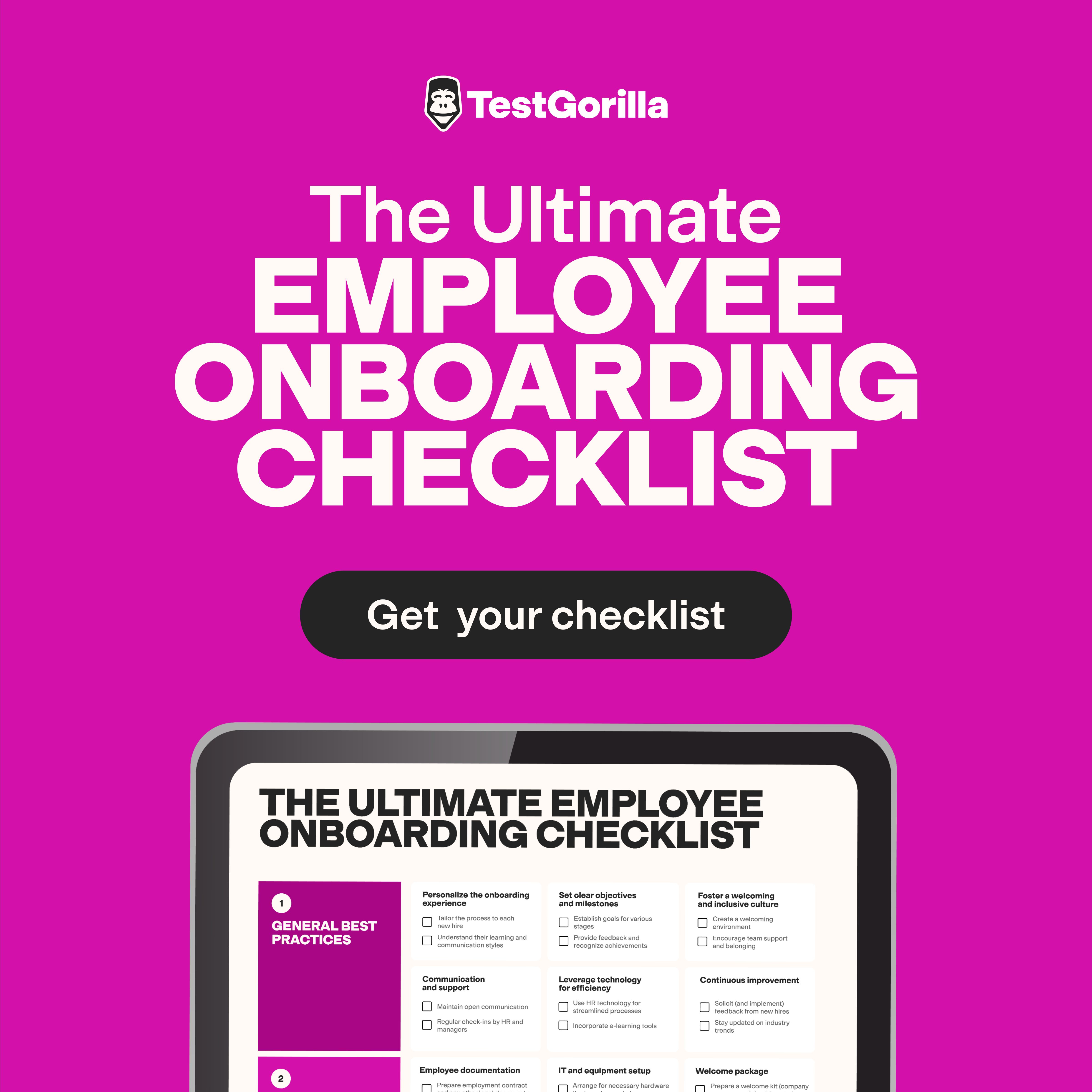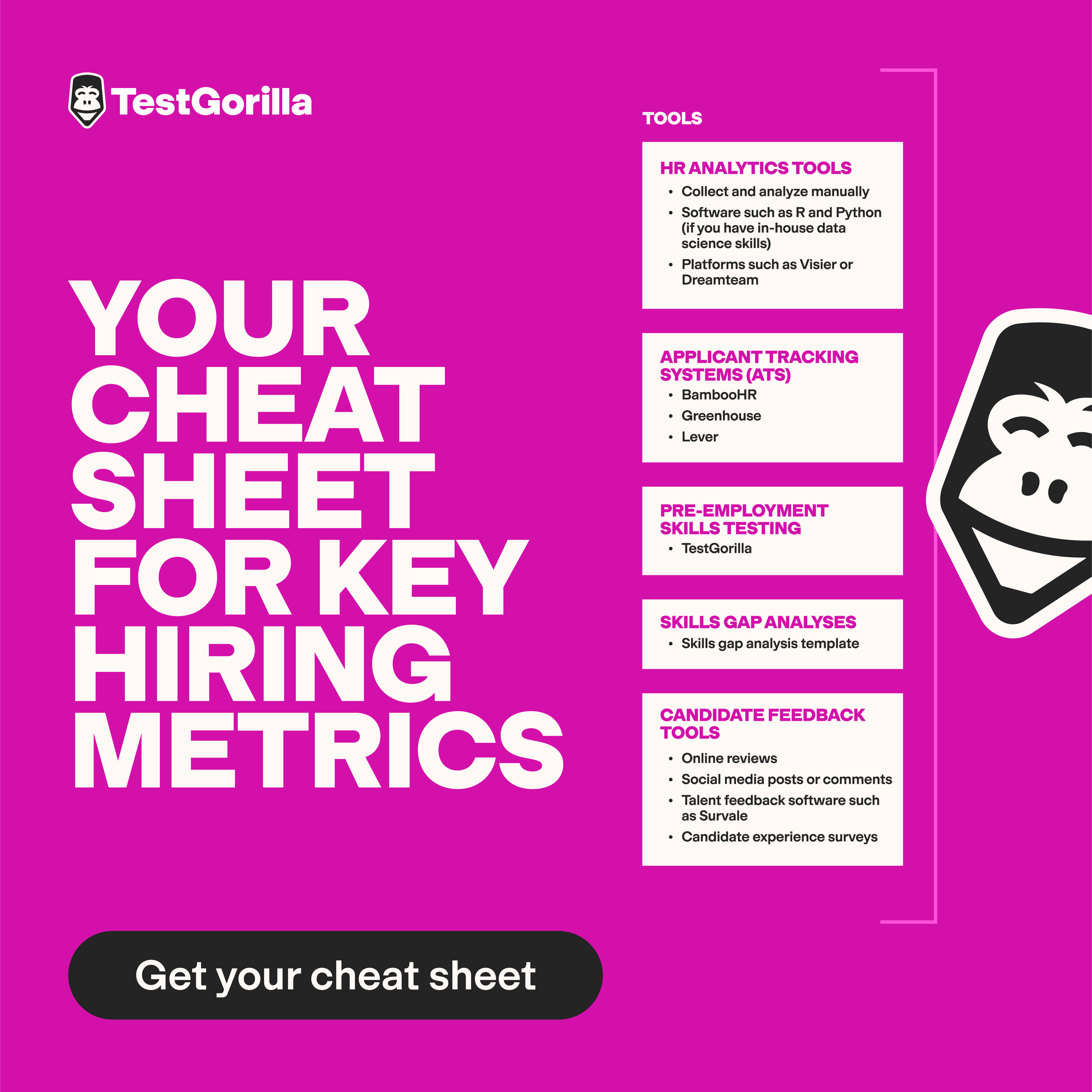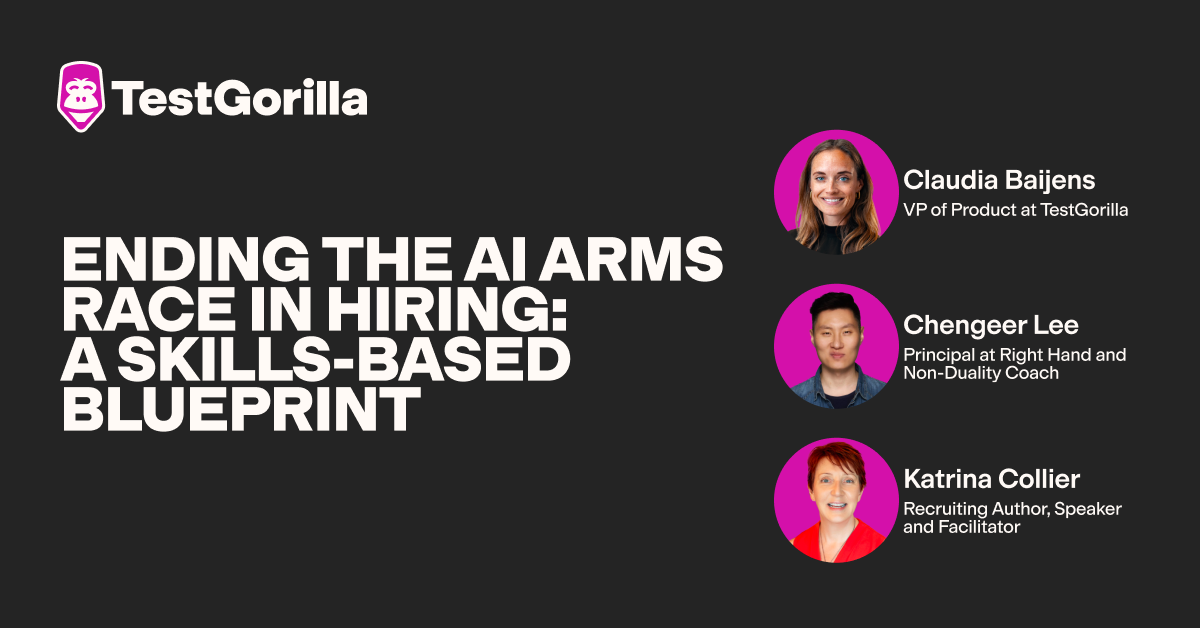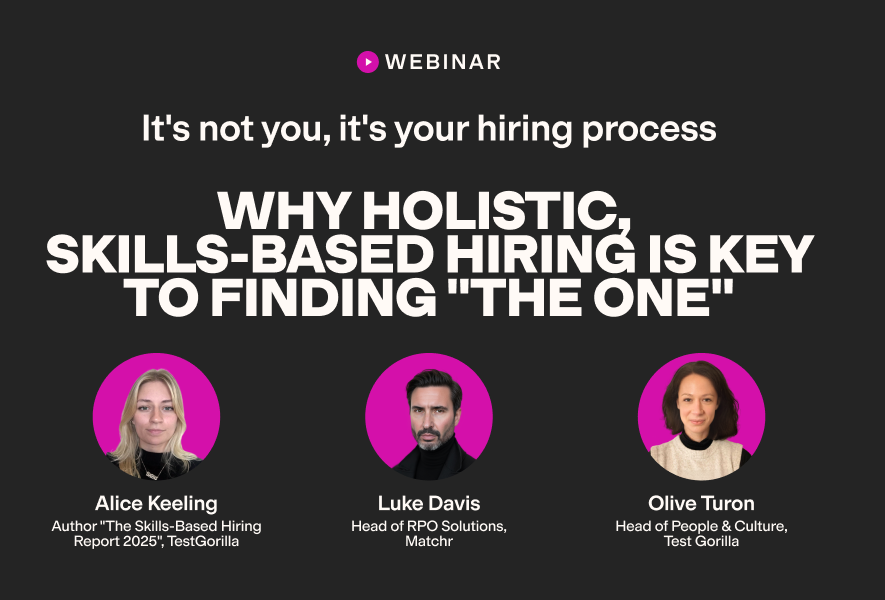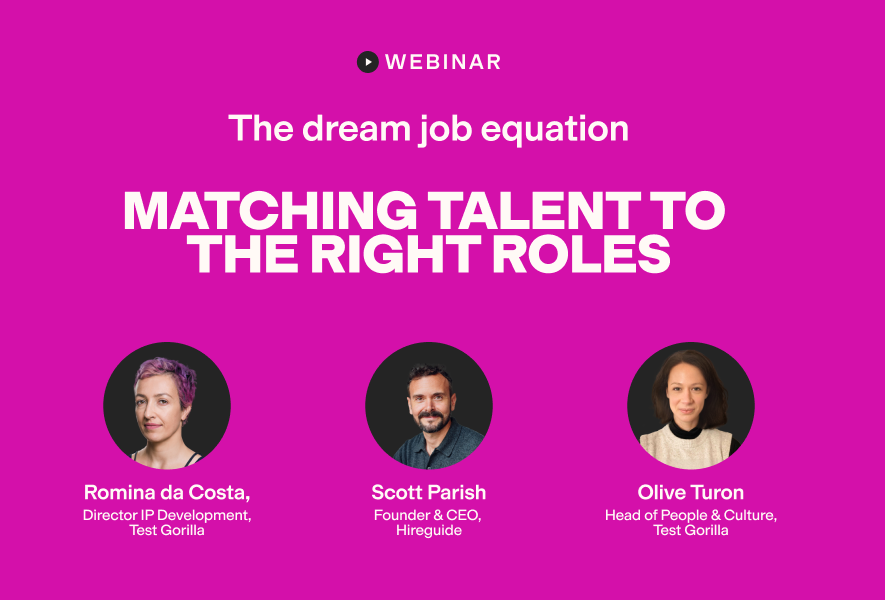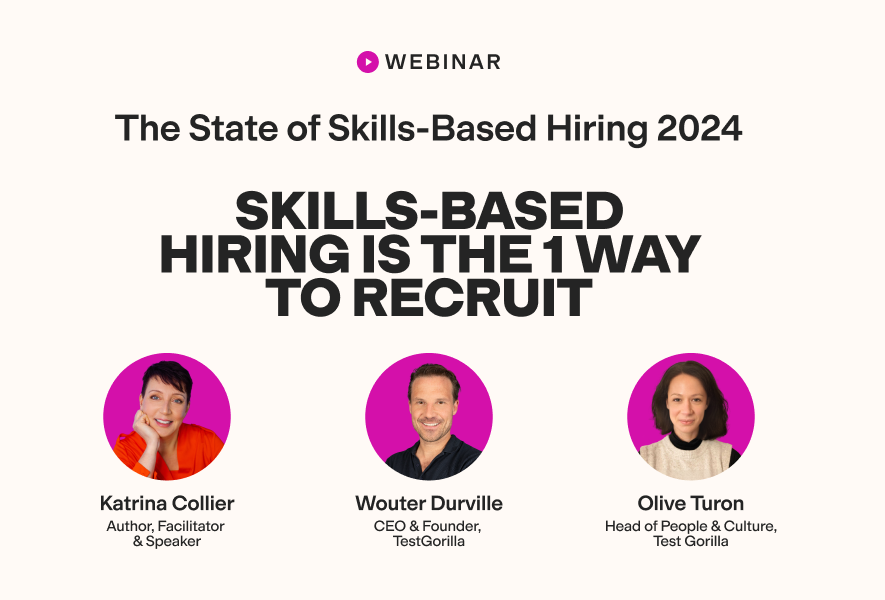How the experts approach design thinking interviews
Design thinking interview questions that revolve around a portfolio walkthrough or naming tools designers use aren’t just ineffective – they’re counterproductive.
If you default to design thinking interview questions like “tell me about your process,” rest assured that there’s a better way.
We gathered insights from three experts who know how to test and interview candidates for real-world design thinking. We dive into their guidance below – and show you how to pair strong interviews with evaluations (like TestGorilla’s Design Thinking test) to find the best design thinkers on the market.
Why the usual design thinking interview questions won’t get you far
Too often, design thinking interviews default to surface-level questions like:
“Can you walk me through your portfolio?”
“What’s your design process?”
“What tools do you use for design?”
“Which of your past projects are you most proud of?”
“How many years of experience do you have with [software/tool]?”
At first glance, these questions appear to be fine. They can spark some conversation, put the candidate at ease, and give you an idea of their background and experience.
But look more closely, and you’ll see that these questions don’t reveal how someone actually thinks through ambiguous, human-centered challenges.
For starters, they invite rehearsed answers. Candidates can easily memorize and recycle a portfolio walkthrough or “project I’m most proud of” story. That’s harder to do when you ask about their decision-making process in a situation where things didn’t go as planned.
Plus, these questions focus too much on outputs and not enough on the thought process. A candidate speaking about a prototype they created can sound impressive, but it doesn’t tell you how they achieved that result or how they’d work through ambiguity, iteration cycles, and unforeseen problems.
They also over-emphasize tools. Designers’ toolkits change regularly as technology evolves. It’s better to dig into how someone frames problems and tests ideas than whether they’ve mastered Figma or Sketch.
The antidote to these questions? Interviews that uncover how candidates handle ambiguity, apply user empathy, and move ideas from rough sketches to workable solutions.
Testing design thinking in interviews: What top leaders focus on that most don't
The best design leaders have developed interview prompts that do more than extract answers – they surface patterns of thought.
We consulted three experts, each of whom approaches the problem in their own way. Together, their strategies reveal a solid method for identifying true design thinkers.
Here’s what they focus on in interviews:
Discovering and framing the problem first
Messy or vague requirements are one of the fastest ways a design project can go off track. Great candidates don’t rush to solutions – they frame the right problem first.
As Techcombank Design Manager Arry Nguyen puts it, “If you have 10 hours to solve problems, use eight hours to find the right ones before solving them.” In other words, 80% of a designer’s time should be spent on framing before taking action.
Strong candidates show this instinct immediately. When faced with a brief that focuses on a solution rather than a need, they’ll ask clarifying questions, dig into user context, and map out potential problem spaces before proposing ideas.
And when clients push back, the best designers reframe the conversation, use evidence or user research to guide decisions, and align the team on the actual problem without creating friction.
Questions to ask:
“A stakeholder wants a specific solution you believe misses the mark. How would you handle that?”
“Imagine a cross-functional project where marketing, finance, and operations all have conflicting priorities. How would you identify the real problem before proposing a solution?”
Linking empathy with problem-solving
Candidates may generate clever solutions, but without a genuine understanding of the people they’re designing for, even the best ideas can fail. The best designers use empathy to uncover needs that briefs often miss.
“To frame a problem correctly, user empathy is important,” Nguyen notes, “because normally stakeholders just see things in terms of technology, cost, or profit.”
Priorities can shift between different departments, and design thinkers may have their own, but by empathizing with users, everyone can come closer to true alignment.
Strong design thinkers are curious, systematic, and human-focused. They can clarify assumptions, gather user insights, and show how user research influences design direction.
During the interview process, listen for stories where feedback led to a surprising pivot – that’s proof of humility and adaptability.
Questions to ask:
“Tell me about a time when your understanding of the user changed the direction of a project.”
“How do you go about understanding a user’s needs when requirements are vague or incomplete?”
Testing creativity under constraints
Great design doesn’t happen in a vacuum. Designers are almost always working with constraints: limited budgets, strict brand guidelines, short timelines, technical requirements, and more.
Yes, you want to test for creative thinking. But the real test of a designer isn’t whether they can create with endless freedom – it’s whether they can create under pressure and adapt without losing their vision.
That’s the lens Clara Lipkau, Motion Design Lead at Camping TV, brings to her interviews. For her, polished portfolios prove little.
“One key thing to look for is whether they can clearly explain the reasoning and process behind one of the projects in their portfolio. Just seeing polished mockups isn’t enough; you need to understand the thinking and decisions that led to that final result,” she tells us. “If they can walk you through their process and share meaningful insights, that’s a big plus.”
Lipkau also likes to see how candidates think in real time.
“It’s also worth testing this with a small exercise. Give them a short brief for a fictional project that needs some design work, along with a few constraints or brand guidelines,” she explains. “Then, ask them to develop a basic concept. This way, you can see how they think and create under realistic conditions.”
Questions you can ask
“Can you walk me through the reasoning and process behind one of the projects in your portfolio?”
“If I gave you a brief with strict constraints, how would you generate an initial concept?”
Embracing iteration and experimentation
Great design isn’t about getting it right the first time. Top talent embraces testing, prototyping, and learning from failure.
“Candidates who truly understand design thinking ask about measurement and iteration cycles,” Bill Berman, Founder and CEO of Berman Leadership, tells TestGorilla.
This curiosity shows they can move beyond theory into practical experimentation, adapting based on data rather than gut instinct. It also signals that they’re driven to solve problems effectively.
“They want to know how we tracked behavior change over 6–12 months and what feedback loops we built into our interventions,” Berman notes.
During the interview process, the strongest candidates will emphasize a cycle of testing, feedback, refinement, and re-testing. They’ll explain how they prioritize what to prototype first, often tackling the riskiest assumption or problem with the greatest learning potential first.
Moreover, they’re comfortable saying no to low-value work and can frame their prioritization in terms that stakeholders understand – cost, speed, and user insight.
Questions you can ask
“How do you structure and learn from your prototyping or testing cycles?”
“How do you decide what to prototype first when resources are limited?”
Thinking in systems, collaborating in teams
Designers rarely work in silos. The best ones recognize how individual choices ripple across systems and understand how to collaborate across disciplines. As Berman astutely highlights, “Systems-level thinking separates genuine design thinkers from those who just know the vocabulary.”
In practice, this means handling conflicting feedback, spotting root causes, and proposing systemic solutions rather than quick, surface-level fixes.
But how do you spot these design thinking skills in interviews? Berman and Nguyen have two approaches.
“I test candidates’ ability to synthesize conflicting feedback with a specific scenario,” Berman says. “Exceptional candidates dig deeper and find that the real issue was cultural misalignment between analytical personalities and relationship-driven business development expectations. They focus on systemic solutions rather than individual coaching band-aids.”
Of course, true collaboration also means honesty about personal contributions, which is what Nguyen emphasizes in her interviews.
“It’s very easy for candidates to overemphasize their contributions on a project study,” she highlights. “Press candidates for why they chose a particular method or settled with a certain sample size.” Clearer answers typically mean more – and more genuine – contributions to a project.
Questions you can ask
“How do you handle conflicting feedback from different stakeholders on a project?”
“How many people worked on this project, and what was your specific contribution?”
The best insights on HR and recruitment, delivered to your inbox.
Biweekly updates. No spam. Unsubscribe any time.
Test creative thinking first, interview for problem-solving second
Design leaders agree that interviews should focus on how candidates frame problems, empathize with users, create under constraints, iterate strategically, and collaborate across systems.
But here’s the tough bit: Even the best interview questions rely on what candidates say. What you need is to confirm what they can do in practice.
That’s why the best approach is to evaluate first, then interview.
Starting with a skills-based evaluation, like the ones TestGorilla offers, can transform your hiring process. These help you objectively assess design thinking skills – from framing problems to ideating and iterating toward meaningful outcomes – all before the first conversation. Evaluations give you a clear signal of real-world ability, separating those who talk the talk from those who can truly deliver.
With that confirmation in place, interviews become more powerful. You’re no longer screening for basic capabilities – you’re using design thinking interview questions to dig deeper into how candidates handle ambiguity, apply empathy, and translate insights into solutions.
That’s where TestGorilla shines. Our evaluations help you find the candidates with the right mindset and skills, so you can easily shortlist them for interviews.
For designers, you can use these two tests:
The Design Thinking test, which measures problem definition and framing, empathy and user focus, creativity and ideation, and prototyping and iteration.
The Problem Solving test, which covers schedule creation and adjustment, data interpretation and logical application for decision-making, task prioritization and ruleset order application, and text and numerical analysis to draw conclusions.
Together, these tests give you one of the most effective ways to identify design thinkers – and ensure your interviews focus on strategy, collaboration, and creativity with candidates who’ve already proven they can deliver.
Hire for human-centered design and creative problem-solving
Most interviews stop at measuring what candidates say. The best ones reveal their thought processes. This gap makes all the difference, especially when it comes to evaluating skills like design thinking.
It’s also why a skills-first approach is key: evaluate real-world capabilities first, then use interviews to go deeper.
Ready to find candidates who can solve problems, not just talk about them? Book a free demo or start a free TestGorilla plan today.
Related posts
You've scrolled this far
Why not try TestGorilla for free, and see what happens when you put skills first.


